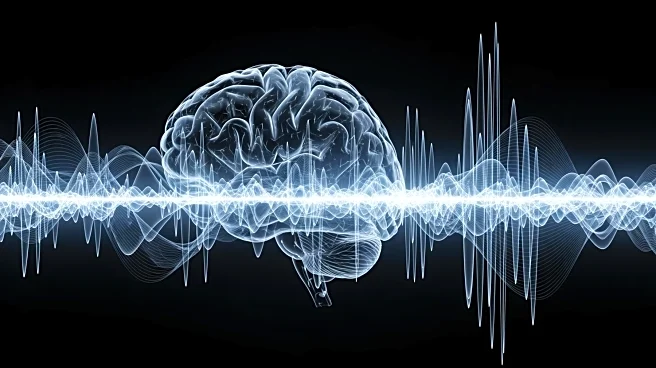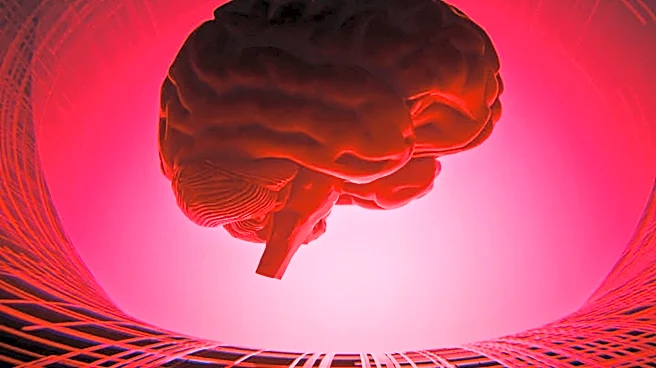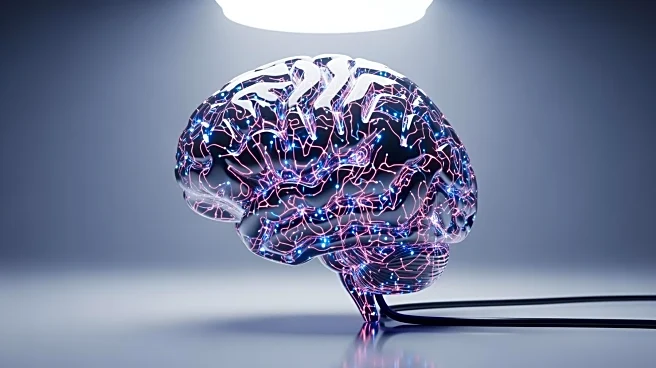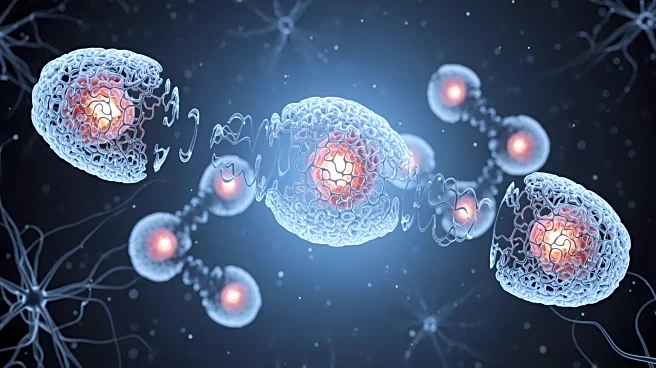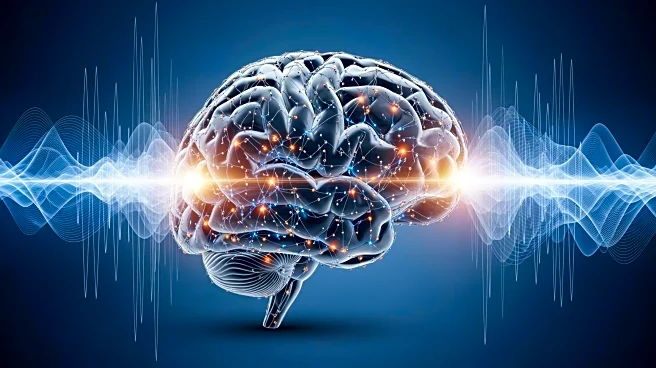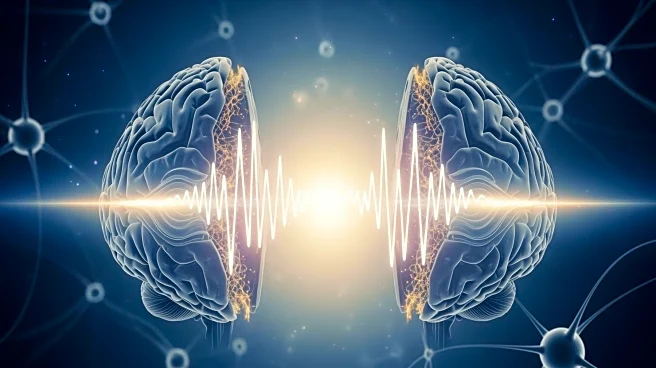What's Happening?
A study published in Nature Neuroscience reveals that the human brain organizes its cognitive functions through a repeating, clock-like cycle of network activations. This cycle helps manage attention, memory, and sensory processing efficiently. Researchers
used magnetoencephalography data to identify patterns in brain network activity, finding that these networks activate in a consistent sequence. The cycle, repeating every 300 to 1,000 milliseconds, suggests a structured temporal organization in brain activity, potentially influencing cognition, aging, and brain disorders.
Why It's Important?
The discovery of this rhythmic cycle offers new insights into how the brain coordinates complex cognitive functions. Understanding this temporal organization could have implications for diagnosing and treating cognitive disorders, as disruptions in the cycle may be linked to conditions like Alzheimer's. The study also suggests that individual differences in cycle strength and speed could be genetic, providing a potential biomarker for cognitive performance. This research may lead to new approaches in enhancing cognitive function and understanding brain disorders.
What's Next?
Future research will explore how these cycles can be influenced by training, disease, or interventions. Scientists aim to determine whether the cycle shapes the sequence of mental operations and how it might constrain cognitive processes. The potential for using cycle-related measures in clinical applications, such as neurostimulation treatments for depression, is also being investigated. This research could pave the way for new methods to track and improve cognitive function by adjusting the brain's internal timing.
Beyond the Headlines
The study highlights a previously unknown level of brain organization, focusing on when cognitive functions occur rather than where. This cyclical pattern may help balance mental demands by preventing interference between functions like attention and memory. The findings suggest that the brain's internal rhythm acts as a scaffold for thought, even without external cues. Understanding this cycle could lead to innovative strategies for enhancing cognitive flexibility and performance.
